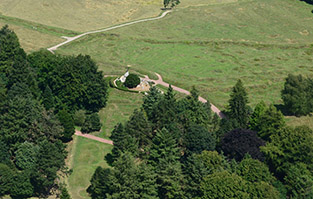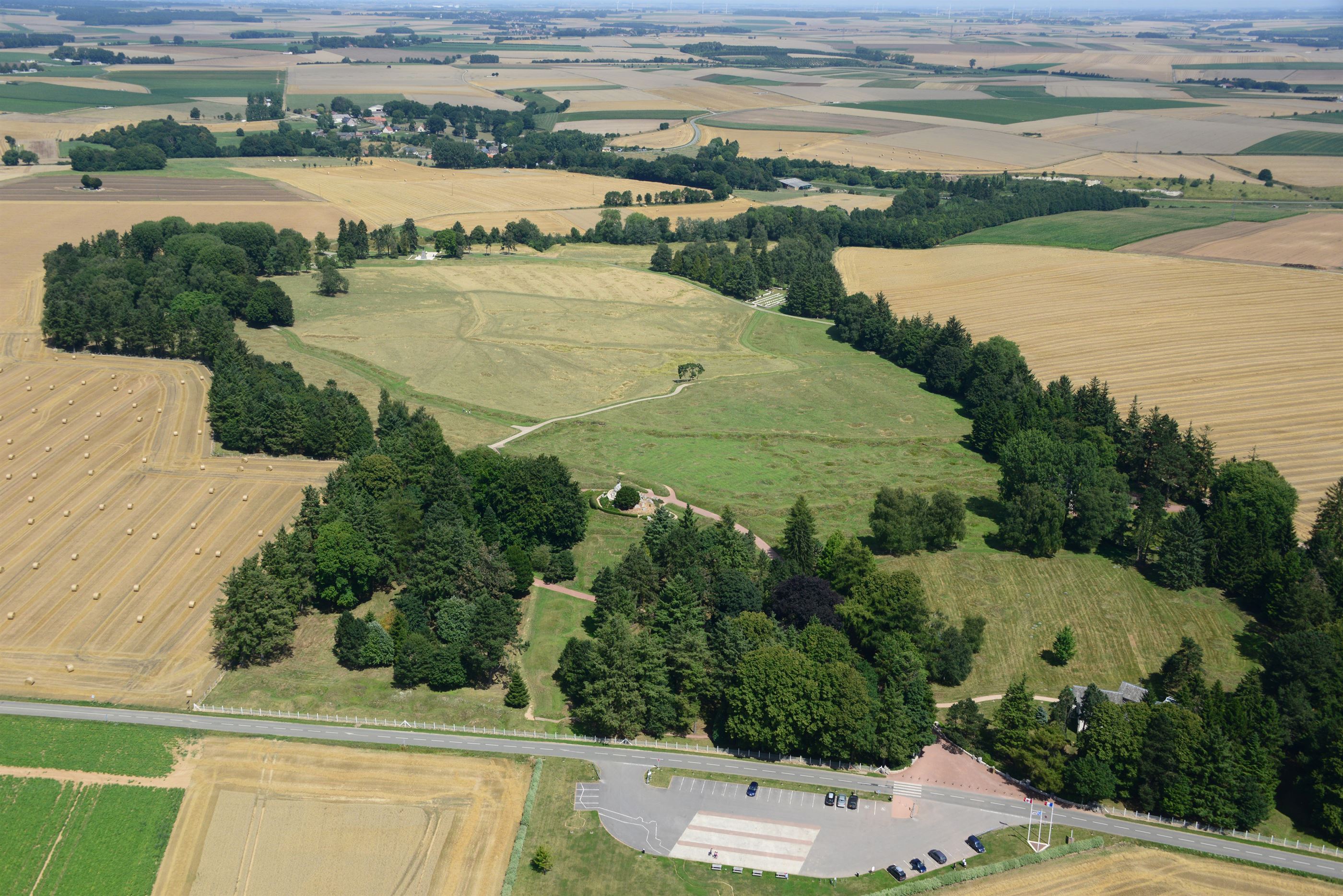Fast facts: Beaumont-Hamel Newfoundland Memorial
- Located in northern France, the Beaumont-Hamel Newfoundland Memorial can be found nine kilometres north of the town of Albert within the département of the Somme.
- The Beaumont-Hamel Newfoundland Memorial encompasses 30 hectares and is the largest of five Newfoundland memorial sites in France and Belgium that together form the Trail of the Caribou.
- Sculptor Basil Gotto's bronze caribou design is believed to have been inspired in part by the iconic Newfoundland photograph, "The Monarch of the Topsails" (view the image in our photo gallery). The noble bronze caribou is the emblem of the Royal Newfoundland Regiment.
- Landscape architect Rudolph H.K. Cochius incorporated touches from home throughout his design. The Caribou Monument sits atop a mound surrounded by rock and shrubs native to Newfoundland. More than 5,000 trees native to Newfoundland (including spruce, dogberry and juniper) were also planted along the boundaries of the site before its opening in 1925.
- 820 names are inscribed on three bronze tablets at the base of the Caribou Monument in memory of those who died during the First World War and had no known grave. The list includes 591 members of the Royal Newfoundland Regiment, 114 sailors in the Newfoundland Royal Naval Reserve and 115 Merchant Mariners.
- Three Commonwealth War Graves Commission cemeteries are located at the Beaumont-Hamel Newfoundland Memorial: Hawthorn Ridge Cemetery No. 2, Hunter's Cemetery and Y Ravine Cemetery. Almost 700 war casualties are buried or commemorated at these sites, with approximately 1/4 remaining unidentified even today.
- Located halfway across No Man's Land, the “Danger Tree” marked an area of particularly heavy fire and the site of a high concentration of Newfoundland casualties. Following the battle, the tree's broken and twisted remains emerged as an important symbol of the scope of devastation the fighting caused. Today, a replica of the original tree stands in its place.
- Though unrecognizable after the battle, the “Danger Tree” was originally a plum tree.
- The Memorial's majestic caribou statue is estimated to weigh approximately 770 kilograms (1,700 pounds).
- Field-Marshal Earl Douglas Haig, Commander of the British Expeditionary Force during the Battle of the Somme, officially unveiled the Memorial on June 7, 1925.
- Along with the Canadian National Vimy Memorial, Beaumont-Hamel Newfoundland Memorial is one of only two National Historic Sites located outside of Canada.
- The kilted figure standing atop the 51st (Highland) Division Memorial was modeled after a real First World War soldier. Company Sergeant Major Bob Rowan of the Glasgow Highlanders was sculptor George Paulin's inspiration. A Gaelic plaque on the front of the memorial reads La a'Blair s'math n Cairdean (friends are good on the day of battle).
- The Beaumont-Hamel Newfoundland Memorial welcomes approximately 230,000 visitors each year.
Interested in learning more about the Battle of Beaumont-Hamel? Check out our learning hub.
- Date modified:

